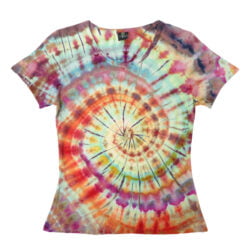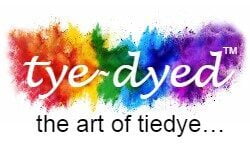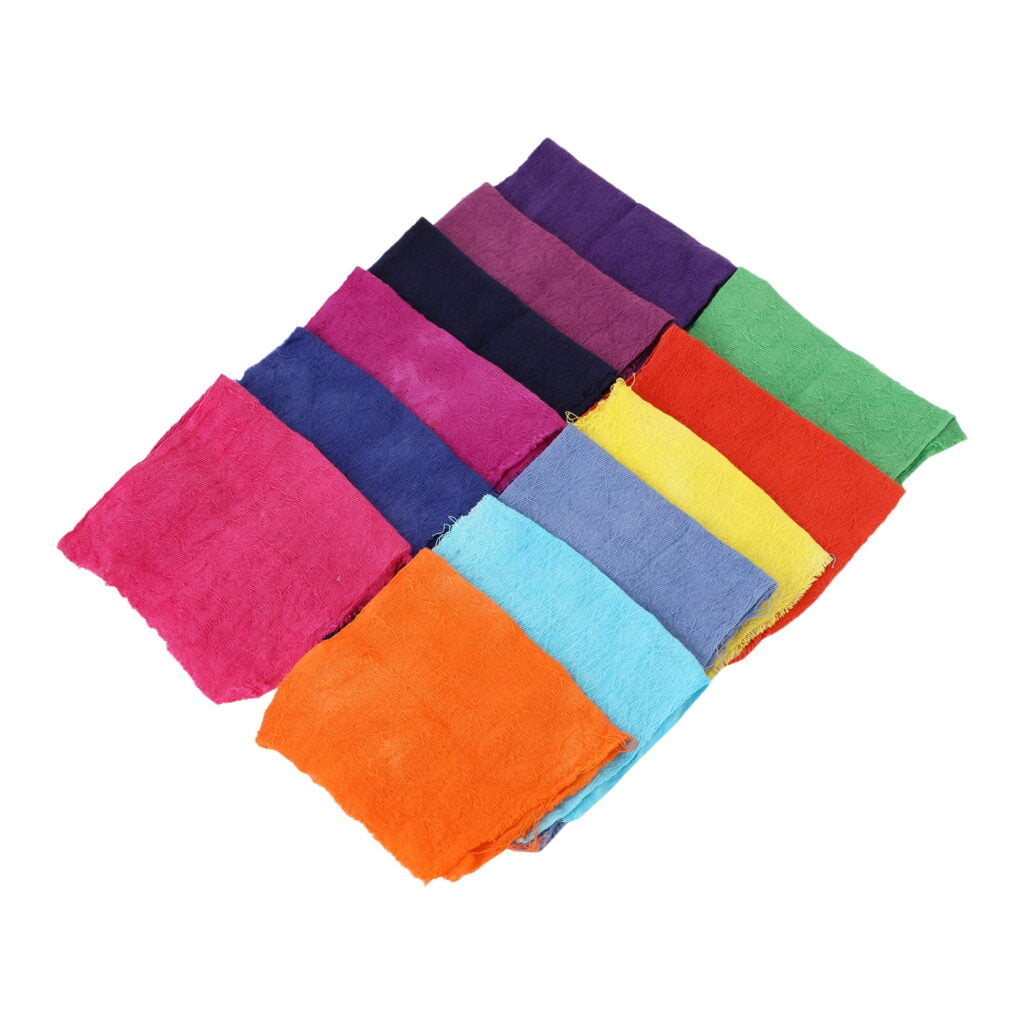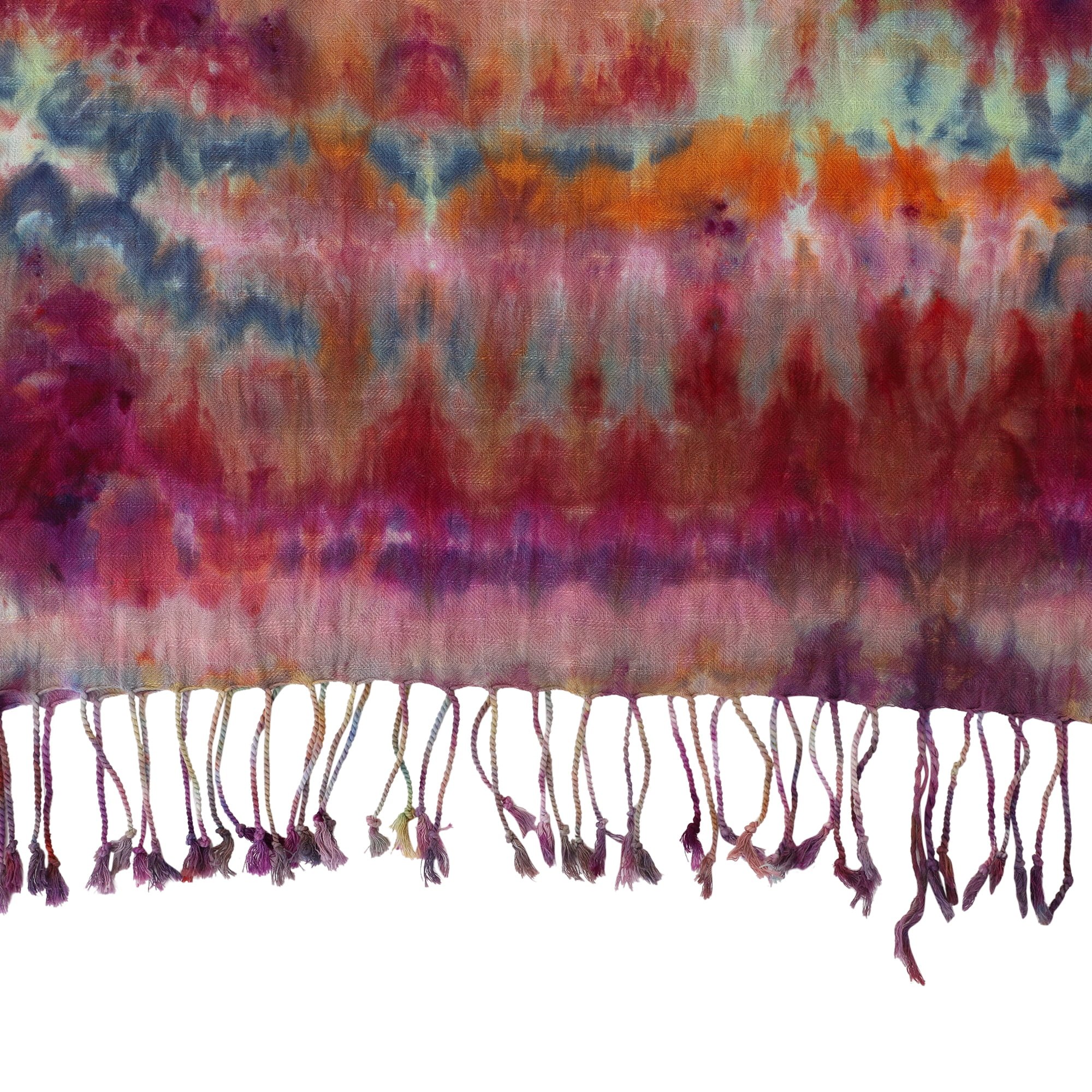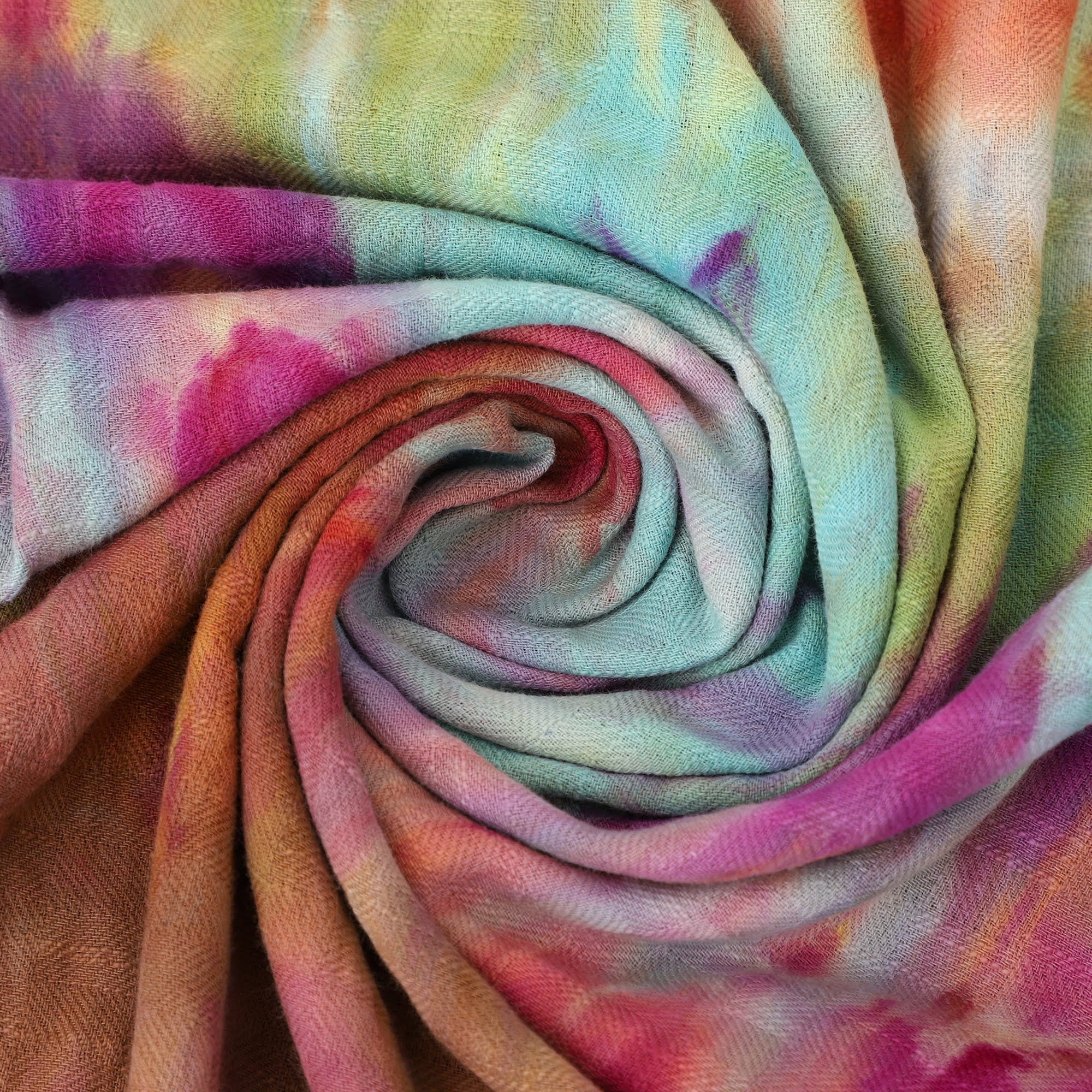
Since 1978 the Tye-Dye reactive dyes replaced the traditional natural colours for faster production fast colours, bright colours, easy pro current easy to use, cheaper, longer life and most important are non-toxic. As per the today’s environmental conditions our reactive dyes are disposable. Using a PH paper test it can be disposed in the drain. A dyebath containing Soda Ash neutralize the Alkaline with vinegar and if containing Acidic acid or vinegar add Soda Ash.
The correct Ecological & Azofree dyes for Tie dyes, Batik, Garment dyeing, Spray dyeing, printing & sun dye all natural fibers of cotton, viscose rayon, silk & Linen.
Using our dyed can be handled by all ages. You can Hand dye in a Tub, Machine or by Application. All you need is the Material to be dyed (only natural fiber’s ) is our dyes, warm water, soda ash, plain salt, calsolene oil, urea a thickener.
Tie Dye Reactive Dyes
To Get perfect & repeatable results follow the % dye of fabric weight. Normally you can use a tablespoon for estimated dye. The formula is one level table spoon = approx. 10 grams.
Special Note-
- Concentration of dye per fabric weight differs colour to colour.
- The chemicals used also differs colour to colour check our chemical chart as per colour for accurate results.
- The time used to react the dye with the particular fabric/yarn differs colour to colour check our timing chart as per colour for accurate results.
Bought the dye – now How to use it.
Reactive dye means reaction process of dyes with the molecules of the natural fibre
Tie-Dye Process –
Tying/Folding/Crushing. Use impregnated process.
Batik Process-
Block resist/brush resist with wax or bees wax. Use impregnated process or climatic process hand.
Garment dyeing process –
Plain dyeing/washed effect/ old changed to new use – machine climatic process & implemented process.
Spray dyeing process –
Resist blocks/resist oils. Use – after impregnated process.
Printing Process –
Motifs by brush or Hand/Screen/Block. Use – impregnated process.
Painting Process –
Hand Painting & coloring. Use-after impregnated process.
Sun Dye Process –
Tie/Bangled/Resist blocks/crushed & sun dried. Use-after impregnated process.
